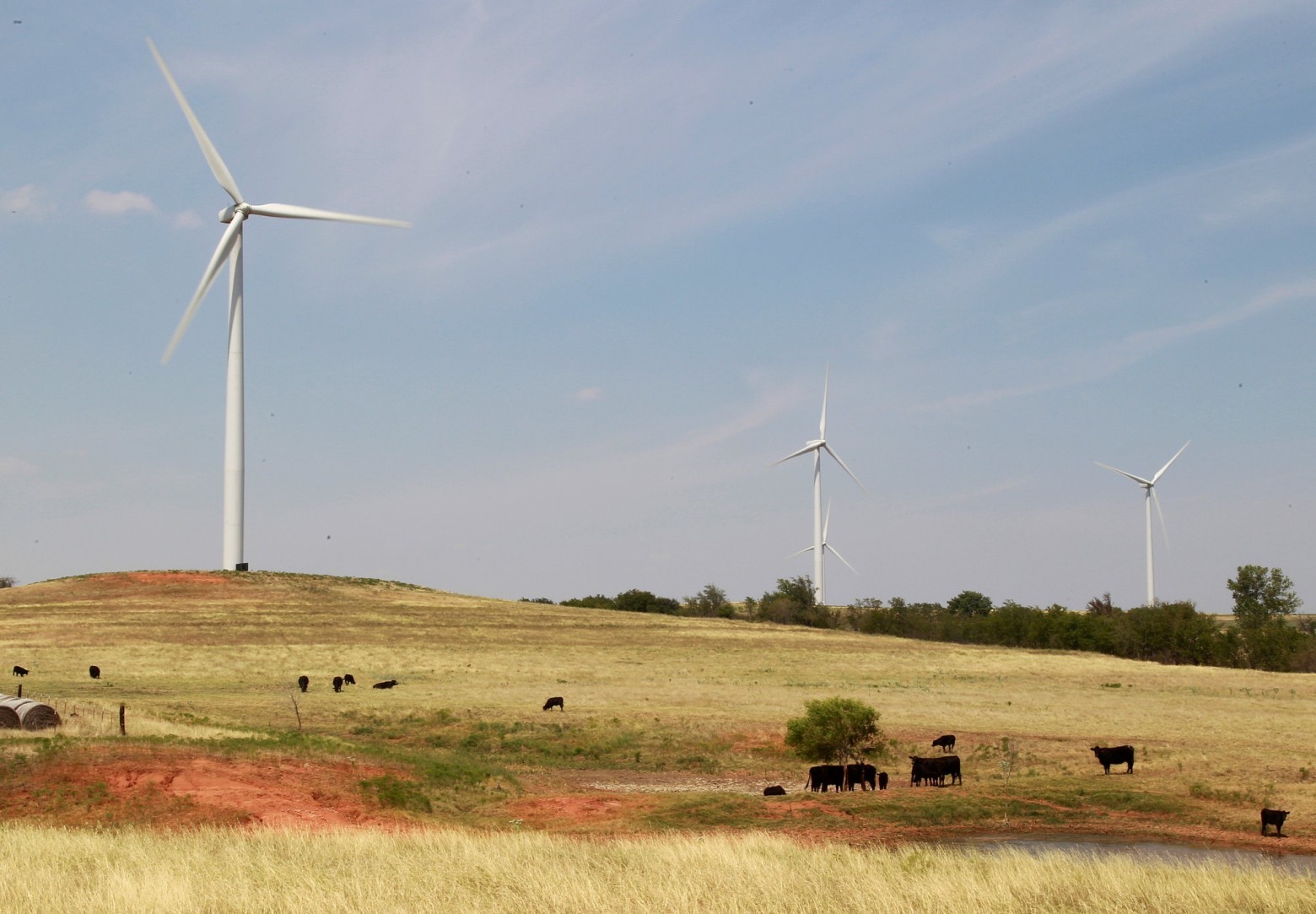Google will fully switch to renewable energy in 2017

NextEra Energy’s wind farm in Minko (Oklahoma), covering 20,000 hectares, is powered by a large Google data center in Pryor (Oklahoma). Photo: Credit Sue Ogrocki / Associated Press
Last year, Google used electricity as a big city: more than 5.7 TWh per year. This will not prevent the search giant in 2017 from fully meeting its needs from renewable energy sources - mainly sun and wind. The company said that all its data centers and offices around the world will switch to alternative sources of energy over the next year.
Google’s loud statement has several reservations.
First, Google will not generate clean electricity on its own. For her do it dozens of new generation energy companies that have deployed wind turbines and solar panels at their power plants. During the past year, Google did not particularly advertise its actions to conclude a number of major deals with producers of such energy. Basically, these transactions are guarantees for the purchase of a certain amount of energy from these suppliers. Such guarantees are a guarantee of financial stability and a kind of investment. With their help, companies can develop, invest in the construction and expansion of business.
')
Secondly, in practice, Google, like everyone else, receives electricity from the public grid. All energy suppliers are connected to this network, including hydroelectric power stations, nuclear power plants, natural gas and coal-fired power stations, wind power stations and solar installations. Electricity from burning coal is not physically different from electricity taken from a windmill. But the volume of direct contracts with alternative energy companies next year will reach the total energy consumption of all Google data centers. This fact makes it possible to state that the company is completely switching to renewable energy sources. In principle, such a statement can be formally recognized as true. The main thing is that Google pays for it, and where the generated electrons go de facto is already a minor issue.
"We are the largest corporate renewable electricity buyer in the world," said Joe Kava, senior vice president of technical infrastructure at Google. “It's good for the economy, good for business, and good for our shareholders.” He emphasized the financial advantages of alternative energy. The main one is that electricity prices from wind turbines do not jump sharply, like oil and coal prices. This allows the company to plan future costs reliably. Sometimes alternative energy is even cheaper than carbon fuel.
Google hopes that contracts with wind power plants with guarantees for the purchase of electricity will push the development of the entire industry. And it happens. For example, NextEra Energy , the owner of the above-mentioned wind farm in Oklahoma, has already built 115 wind farms in the United States and Canada.

The headquarters of Google in Mountain View. Photo: Justin Sullivan / Getty Images
Google's ambitions are not limited to its own power consumption. “Climate change is real. We are a global company, and our goal is to give everyone in the world the necessary tools and opportunities to help protect the planet, ”writes Google. To this end, the company has invested $ 2.5 billion in various alternative energy projects, helps in environmental research, uses the latest in-depth training technologies to analyze environmental information: changes in the Earth’s forest cover, state of the oceans and other ecosystems.
Google has long been eyeing alternative energy. For example, back in 2008, Google became the largest investor in research in the field of geothermal energy, and later received a patent for floating data centers - barges with servers on board, which are powered by wave energy.

Construction of a floating data center Google in the San Francisco Bay, 2013. The data center can be powered by float generators : this design is patented by Google
Such ships anchor at a distance of up to 11 km from the coast, where standard float-operated generator sets are scattered over the waves (in the picture to the right).

In the "data barges" one of the main problems is solved automatically - the method of accumulation and removal of electricity. Here it does not need to take anywhere. It is consumed directly at the site of "mining". In addition, the problems of heat removal from the servers here are solved ideally simply because the global ocean is the best source for water cooling. It is enough to put simple pumps.
Before the practical implementation of the idea is still far. At first, floating barges are supposed to moor in ports and feed from the shore . But in the future, if the idea becomes widespread, then Google can deploy a fleet in the world’s ocean on its own sources of energy. True, it will be problematic to connect to the Internet, except via satellite channels. By the way, it is Google that finances the Ilon Mask project on launching 4425 communication satellites into orbit, which will provide high-speed Internet access services on a global scale in the Ku (10.7-18 GHz) and Ka (26.5-40 GHz) frequency bands.
Google's transition to renewable energy is a good industry help. This allows energy producers to scale and reduce costs. It is estimated that by doubling the power of the station, the cost of solar energy decreases by about 20%, and wind energy - by 12%.
Other large IT companies are following Google’s example. Amazon expects at the end of 2016 to exceed the level of 40% of energy consumption from renewable sources and recently announced five projects of solar power plants. Microsoft, with a consumption of 3.3 TWh per year, plans to reach 50% in 2018.
Source: https://habr.com/ru/post/369957/
All Articles